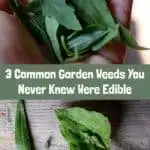The heat and humidity of summer makes many things grow bushy and tall.
If you have a garden, you’ll find that this also applies to the abundance of greens you never planted, the wild ones that try to take over your space as they outgrow the squashes and carrots that you sowed early in the season.
Many people refer to them as weeds, we harvest them as food and medicine.
Not only do weeds, or herbs, enrich our diets, they are also a great way to raise the standard of everyday dinners – food for free at it’s very best!
Edible common garden weeds
Everyone is familiar with dandelions (Taraxacum officinale) that cover the entire lawn. Did you know that they are highly nutritious, and delicious, too?
All parts of the dandelion are edible: flowers, roots and leaves.
Add them to salads, make dandelion wine or a dandelion root tincture.
Once you get into the swing of harvesting, you’ll be coming up with your own blends of wild infusions to begin your mornings. Start slowly with gathering herbs (edible weeds), then let your confidence blossom!
8 more edible garden weeds to try out:

- Chickweed (Stellaria media)
- Purslane (Portulaca oleracea)
- Clover (Trifolium)
- Garlic mustard (Alliaria petiolata)
- Dead nettle (Lamium purpureum)
- Henbit (Lamium amplexicaule)
- Thistle (Cirsium horridulum)
- Wood sorrel (Oxalis spp.)
By the end of August, we’ve had our fill of many tender and wild greens. Now, most plants are going into seed.
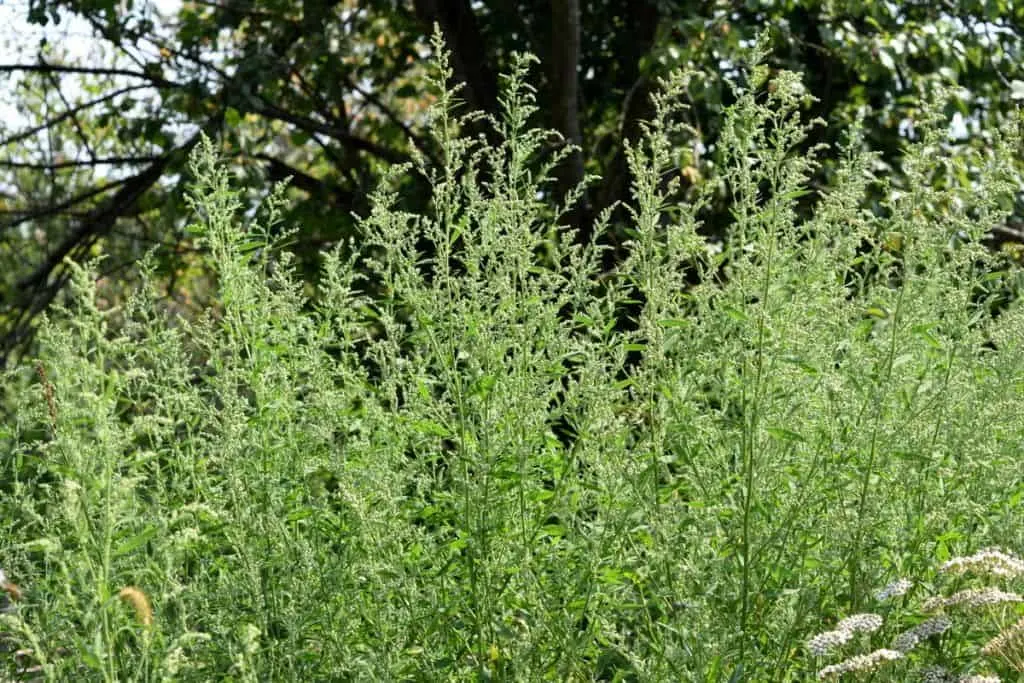
Being so late in the season we are having a glut of massively tall lamb’s quarters (goosefoot), due to an extended time away from the garden.
Rather then be upset about it taking over the zucchini patch in our no-dig garden (we’ve eaten and canned enough!) we are looking forward to harvesting goosefoot seeds once again.
They will then be sprouted in wintertime when green pickings are slim, three feet under the snow.
3 Common Edible Garden Weeds
Whether you utilize a dehydrator, or time and a cool-dry space, learning how to dry herbs is an essential skill that must be mastered if you wish to fill your pantry/cupboards with garden goodness.
It comes in handy when drying mint or lemon balm. This drying process applies to “weeds” as well.
1. Goosefoot (Chenopodium album)
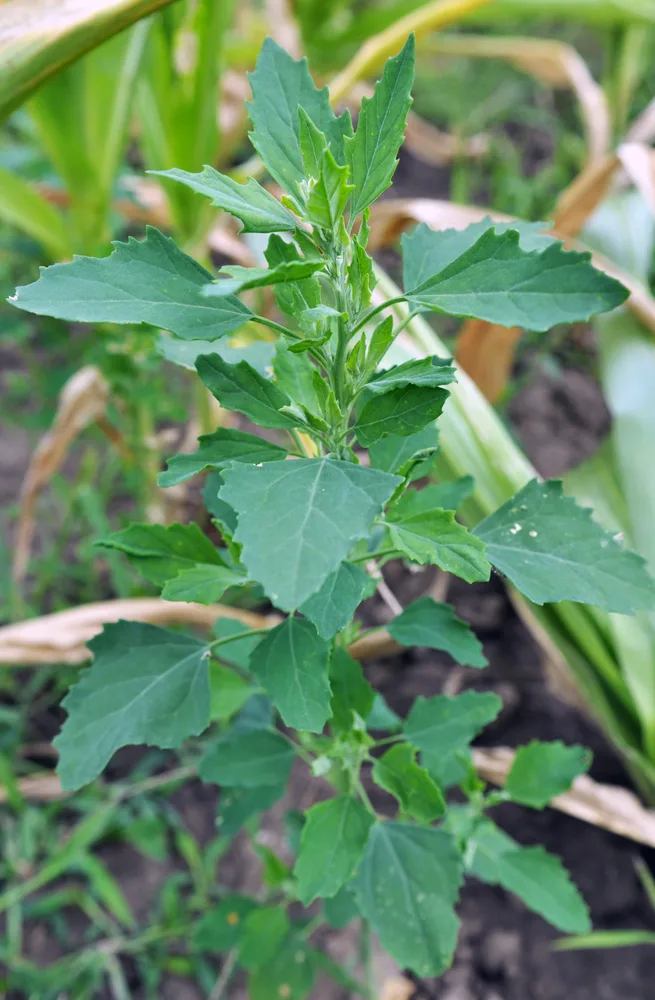
Goosefoot leaves, also commonly referred to as lamb’s quarters, are lovely and tender when harvested early in the growing season, best when they are lightly steamed with hemp oil and salt.
If the stems are getting woody you can pick them leaf by leaf. If they are very young, go ahead and harvest the whole top.
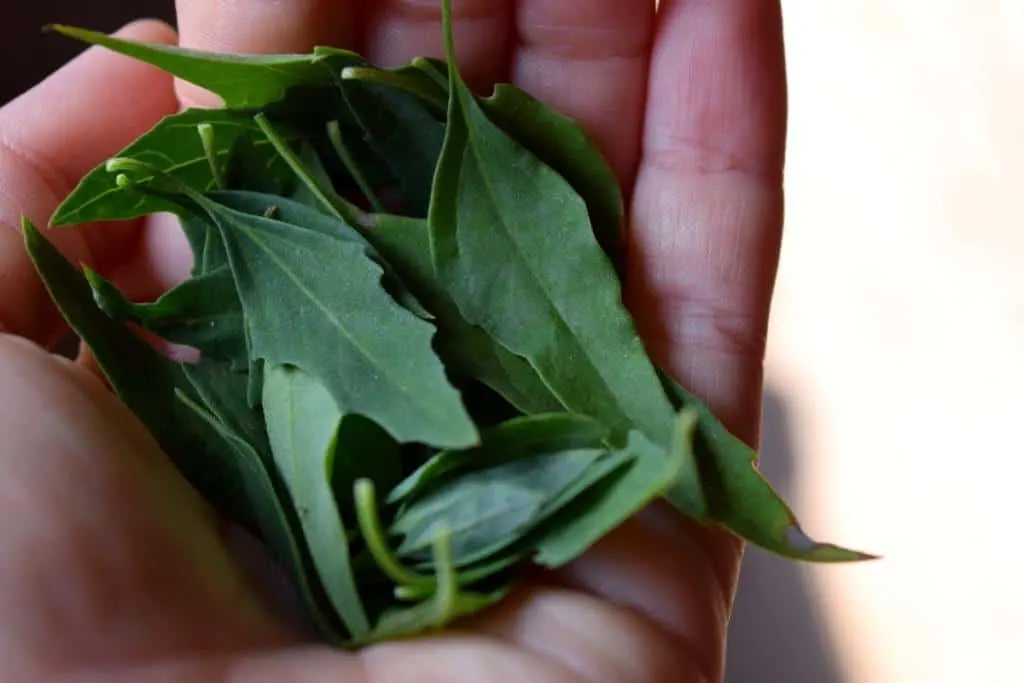
At any point in the season, you will be able to dry a bowlful of leaves for winter use.
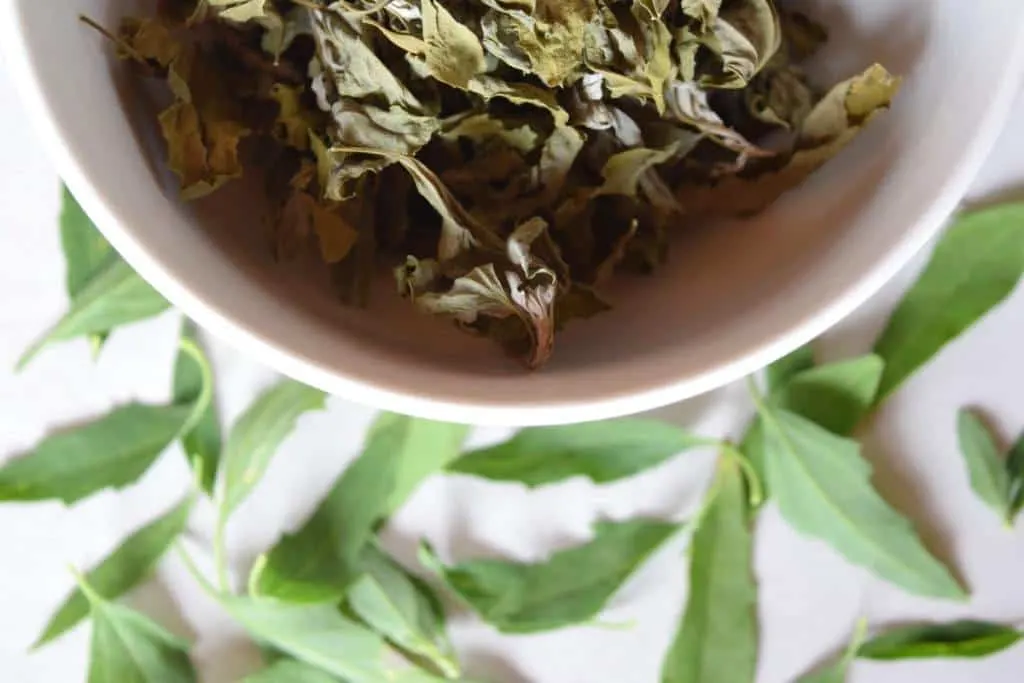
To dehydrate the goosefoot leaves, set them as loosely as possible on a tray or baking sheet. Keep them in shade, out of the sun, and leave them to sit for 3-5 days until thoroughly dry, stirring the harvest every once in a while to prevent it from sticking together.
How to eat goosefoot chips?
Heat up your trusty cast iron pan, add a large dollop of home rendered lard, gently toss in your cut potatoes and brown them until crispy. In the last minute, throw in a generous handful of goosefoot chips (like kale chips) and allow them to soak in the healthy fat.
Fill your plate with fries and wild fermented salsa enjoy every bite of this under-appreciated weed!
2. Stinging nettle (Urtica dioica)
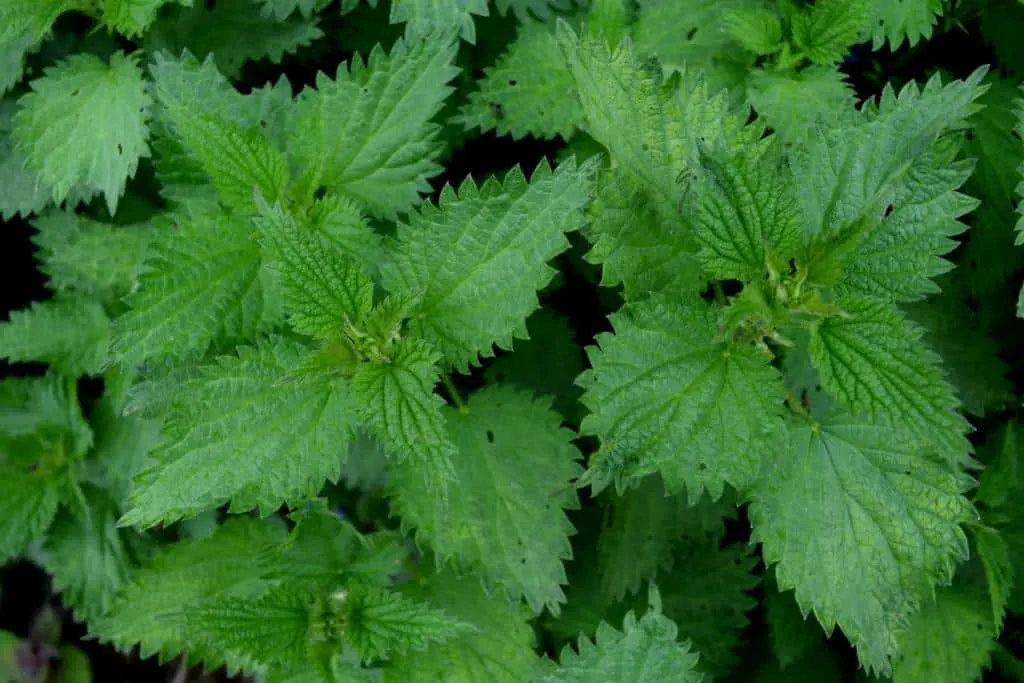
Anyone who has ever taken a walk in the woods and felt a sting, or zillions of them, on their bare legs, has felt the tingling power of a stinging nettle. But nettles aren’t all that bad. In fact, they are incredibly tasty!
With a bit of work it can be turned into nettle fiber too!
Tender leaves and growth tips, including the stems, are one of our coming-out-of-winter energizers. While nettles are nourishing in soups, mostly we harvest them for tea, just before they flower.
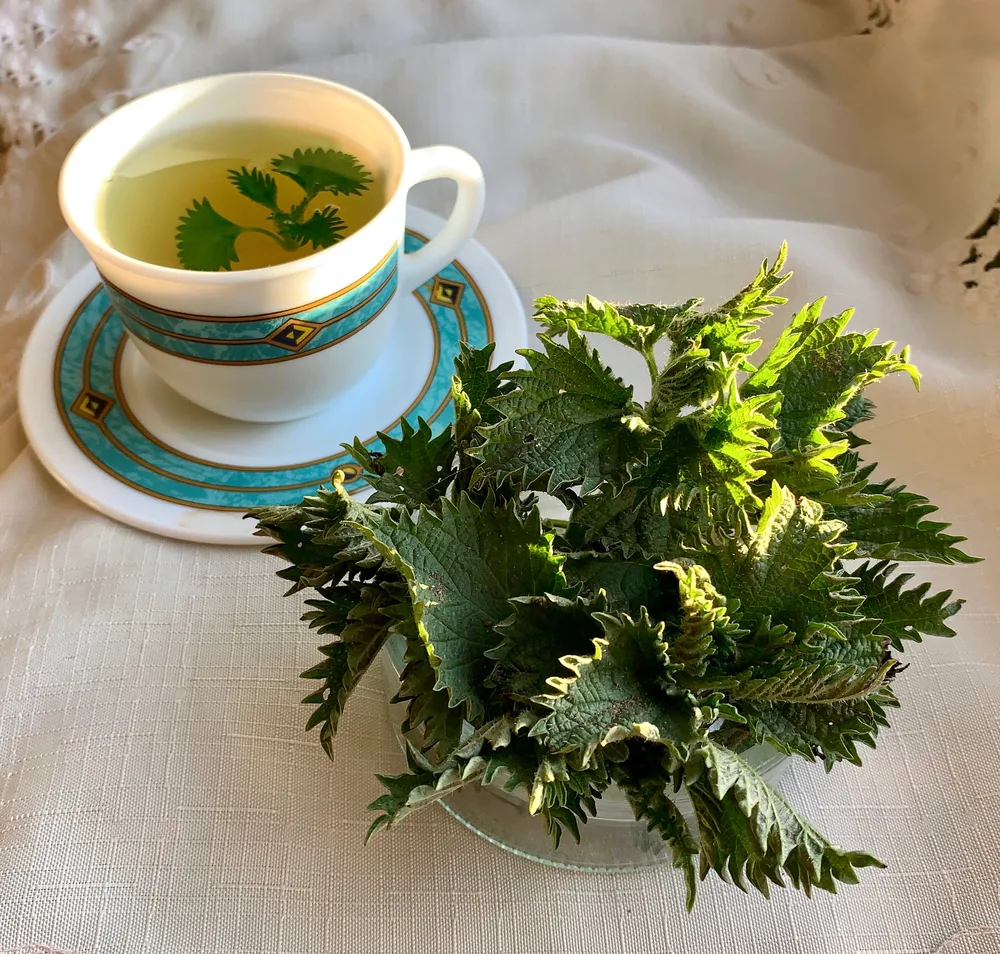
Nettle tea is an amazing immune system booster, which also happens to be rich in calcium and magnesium. You can consume the leaves equally well after making tea, or an infusion, to reap the benefits of the nutrient-dense plant.
Many people drink nettle tea to reduce their hay fever symptoms, improve digestion and kidney health.
We use it because it is abundant, native and tasty.
Can you eat or drink too much nettle?
They key here is moderation. When you use medicinal plants, think like a grazer in the wild. If your body needs a specific nutrient, take more. If not, eat less and move on.
Here are some more brilliant ways to use stinging nettle.
3. Plantain (Plantago lanceolata and Plantago major)
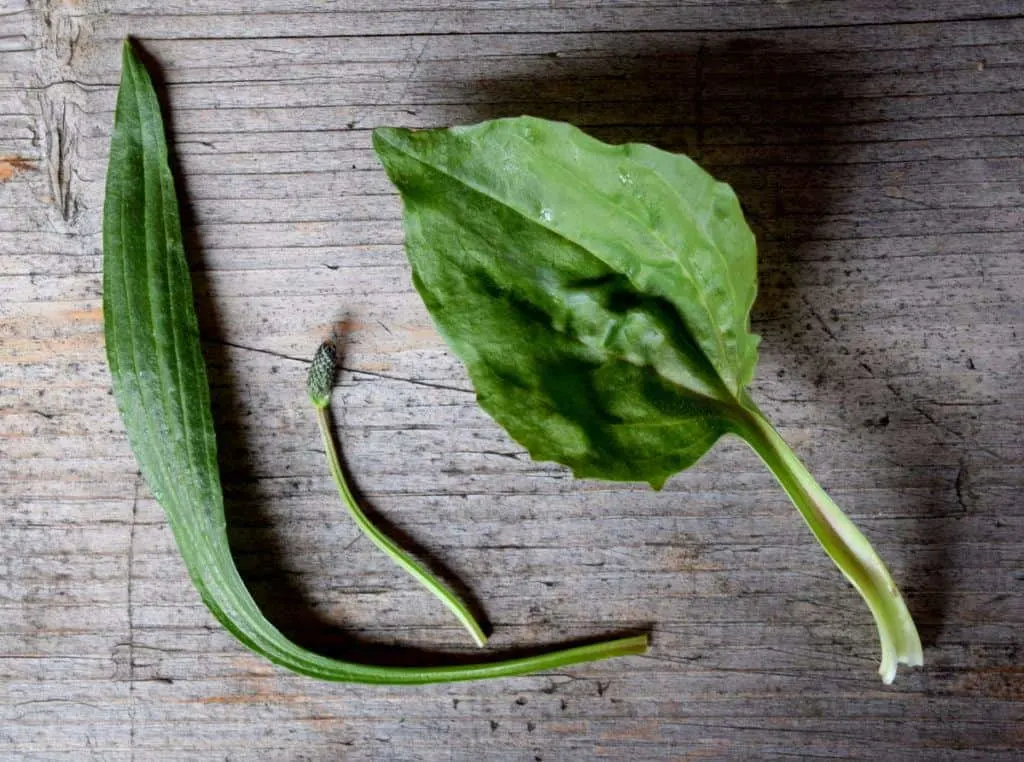
Plantain is more than just a survival food.
In spring, it can be harvested fresh for salads and steamed greens.
Later in the year it can be used for ribwort cough syrup and plantain seeds.
Identifying it is easy, and it is good to know as it’s the second most common weed in American yards, behind the dandelion of course. Take a leaf and pull it apart using both hands, you will see tiny threads between the parallel veins. That’s plantain.
If you get bit by an insect, or stung by a bee, simply make a fresh leaf poultice of plantain and apply it directly to the affected area to reduce inflammation. Plantain can also stop bleeding… – the more herbs you know, the better your homestead experience will be.
Plantain also makes a great tincture, lip balm, vinegar and more.
Proper identification of edible weeds
There is something you need to know before you go harvesting in your own backyard and further afield.
Always be 100% sure that you have correctly identified the plant you are about to cook and serve. Learn it once and learn it well, and you’ll have acquired self-reliant, survival knowledge for life.
Take a foraging course, brush up from time to time with a good book (this is the most popular edible plant identification book) and ask questions in online forums and groups when necessary.
Wild plants have been used for food and as medicine throughout the existence of man, let’s keep on with that tradition, letting your garden heal, through and through.
If plantain, goosefoot and nettles don’t grow where you are, you can always purchase the dried herbs online.
Let us know – what are your favorite weeds to eat?
Pin This To Save For Later
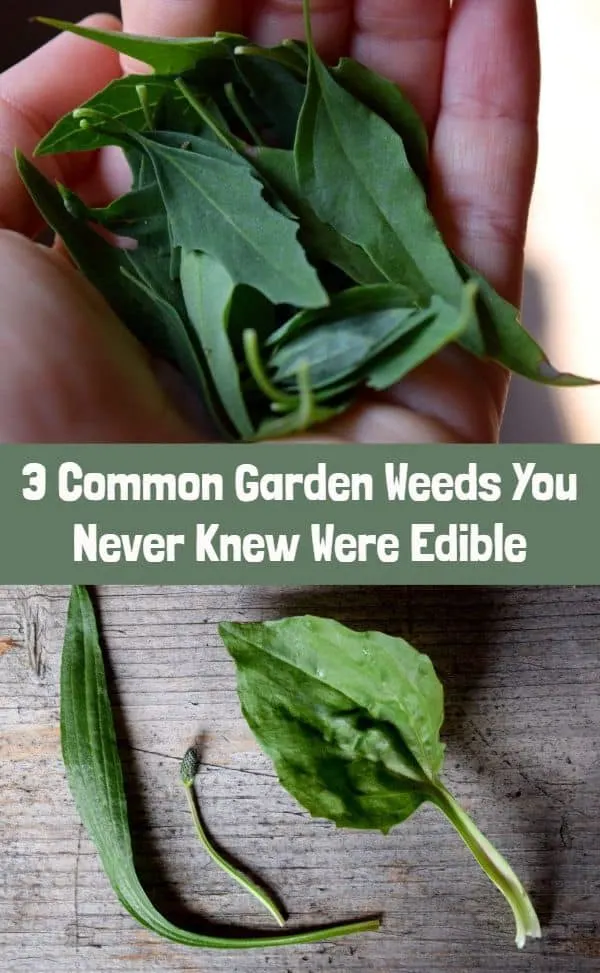
Read Next: How To Dry Herbs At Home – Two Ways!

Get the famous Rural Sprout newsletter delivered to your inbox.
Including Sunday musings from our editor, Tracey, as well as “What’s Up Wednesday” our roundup of what’s in season and new article updates and alerts.


